Choosing the Right Wakeboard
 Sometimes the best way to make a day on the water more enjoyable is to throw in some thrilling water sport activities. One of the most popular activities is wakeboarding. It’s fairly simple and with a little bit of practice, even amateurs can get very good at it, if their passions don’t take them all the way to the pros. But as simple as it is, there are certain nuances that make choosing the right board a little more involved than just finding one that looks cool.
Sometimes the best way to make a day on the water more enjoyable is to throw in some thrilling water sport activities. One of the most popular activities is wakeboarding. It’s fairly simple and with a little bit of practice, even amateurs can get very good at it, if their passions don’t take them all the way to the pros. But as simple as it is, there are certain nuances that make choosing the right board a little more involved than just finding one that looks cool.
You’ll want to have a basic understanding of the different parts of the board and what your options are before going shopping. And if you need additional help, come find a wakeboarding enthusiast at Germaine Marine to exchange tips with. We have locations near Salt Lake City, Provo, and Orem, Utah, as well as Phoenix, Mesa, and Gilbert, Arizona.
Wakeboard Anatomy
We’ll start with some of the basics of wakeboard anatomy. There are three major parts that should be influencing some of your final choices. The flex of the board refers to the flexibility of the board (hence the name). Depending on how easily your board can go with the flow, you might be looking at something that can more easily skid across the water. If this is your preference, then you’ll be looking at a board with more flex. Stiffer boards can be harder to handle, so they’re not idea for novices, but they can provide more intensity for more experienced users.
You’ll also want to think about the rocker, or the curve of the board. Higher rockers generally provide more stability, which can come in handy when you’re learning or trying out jumps and stunts, as the landings can be a little smoother and easier. However, lower rockers have less drag. For people looking to just have fun, the differences are fairly miniscule, but if you get more serious, you’ll want to think a little harder about the kind of rocker that’s going to work best for you.
Finally, consider whether or not you want fins. This is generally an optional feature, so you might need to get them added. Fins can be ideal for beginners, as they help provide more control and stability so there’s less of a learning curve.
Types of Wakeboards
Customizable wakeboards do exist, but when you’re first starting out, you may not know what kinds of customizations to get, so paying for that kind of board might not be worth it. Instead, consider getting something more mainstream to start with and work your way to something fancier. For example, Boat boards are going to be one of your sturdier options, coming with less flex and often have fins. This can really help with control, especially at high speeds.
On the other end of the spectrum, Wake Park boards come with more flex so you can execute fun tricks and stunts. Keep in mind, they’re not as stable when you’re traveling at top speeds.
But the extremes can often be limiting, so many people buy a Hybrid board. These come with a sufficient amount of flex to stay stable while also making it easy to try out jumps. There will still be some limitations, but they’re by far the more versatile option, which can be great for people who’re still figuring out what they want.
This should give you a good idea of at least where to start in your wakeboard search. It’s still going to require some research and careful thought from you, but knowing your options is the first step in picking something that’s going to give your family the kind of excitement that’ll make every on-water trip more entertaining than the last. If you still need a boat to tow your wakeboarders, stop by Germaine Marine and ask to see which models are going to be best for water sports. We proudly serve Salt Lake City, Provo, and Orem, Utah, as well as Phoenix, Mesa, and Gilbert, Arizona.
